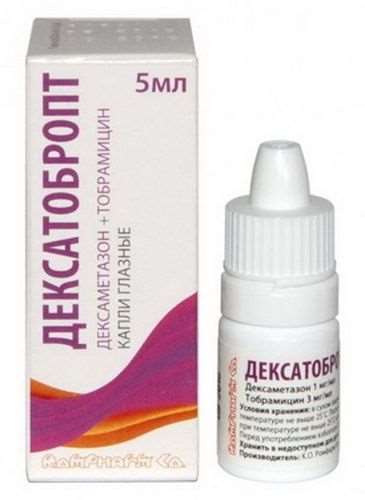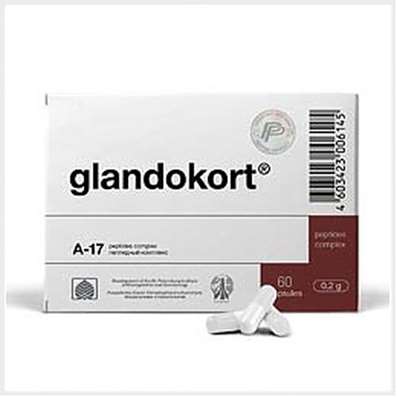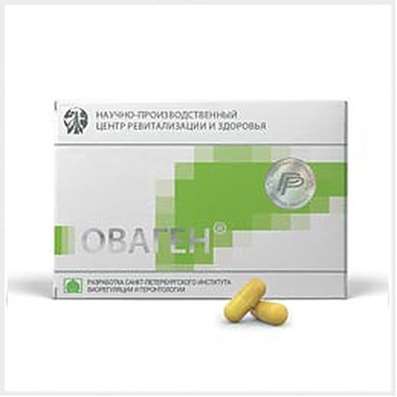Instruction for use: Dopamin Solvay 200
I want this, give me price
Dosage form: Concentrate for solution for infusion
Active substance: Dopamine*
ATX
C01CA04 Dopamine
Pharmacological groups:
Cardiac glycosides and non-glycosid cardiotonic agents
Dopaminomimetics
Hypertensive agents
The nosological classification (ICD-10)
A41.9 Septicemia, unspecified: Septic diseases; Septicemia / bacteremia; Toxico-infectious shock; Endotoxin shock; Bacterial septicemia; Bacterial infections of severe course; Generalized infections; Generalized systemic infections; Infections generalized; Wound sepsis; Septiccopymia; Septic-toxic complications; Septicemia; Septic conditions; Septic shock; Septic condition; Septic shock
I50.1 Left ventricular failure: Cardiac asthma; Asymptomatic dysfunction of the left ventricle; Asymptomatic left ventricular heart failure; Diastolic dysfunction of the left ventricle; Left ventricular dysfunction; Changes in the left ventricle with myocardial infarction; Left ventricular heart failure; Violation of the function of the left ventricle; Acute left ventricular failure; Acute cardiac left ventricular failure; Cardiac asthma; Heart failure of left ventricular; Changes in the lungs with left ventricular failure; Precordial abnormal pulsation; Lack of left ventricle
I95 Hypotension: Arterial hypotension; Arterial hypotension; Age-related hypotension; Hypotension arterial; Hypotonic disease; Hypotonic reactions; Postural hypotension; Symptomatic hypotension; Essential hypotension
R57.0 Cardiogenic shock: Cardiogenic shock
R57.1 Hypovolemic shock: Hypovolemic shock during surgery; Acute hypovolemia
T81.1 Shock during or after the procedure, not elsewhere classified: Operating shock; Postoperative shock; Operational shock
T78.2 Anaphylactic shock, unspecified: Anaphylactic shock; Anaphylactoid reaction; Anaphylactoid shock; Anaphylactic shock; Anaphylactic reactions; Anaphylactic shock to drugs
T79.4 Traumatic shock: Haemorrhagic shock; Crash Syndrome; Posthemorrhagic shock; Postoperative shock; Post-traumatic shock; Post-traumatic shock; Traumatic shock; Syndrome of hemorrhagic shock and encephalopathy
Composition and release form
Dopamine Solvay® 50
Concentrate for the preparation of a solution for intravenous administration 1 amp.
Dopamine hydrochloride 50 mg
Excipients: L-cysteine hydrochloride hydrate; Citric acid monohydrate; Sodium hydroxide; sodium chloride; water for injections
In ampoules of 5 ml; In a pack of cardboard 5, 30 and 300 pcs.
Dopamine Solvay® 200
Concentrate for the preparation of a solution for infusions 1 amp.
Dopamine hydrochloride 200 mg
Excipients: L-cysteine hydrochloride hydrate; Citric acid monohydrate; Sodium hydroxide; sodium chloride; water for injections
In ampoules of 10 ml; In the box 5 pcs.
Description of dosage form
Transparent solution from colorless to slightly yellowish in color.
Pharmachologic effect
Mode of action - hypertensive, adrenomimetic.
Excites beta-adrenoreceptors (in small and medium doses) and alpha-adrenoreceptors (in large doses). Improvement of systemic hemodynamics leads to a diuretic effect. Has a stimulating effect on dopamine receptors. In low doses (0.5-3 μg / kg / min), it mainly acts on dopaminergic receptors. Due to a specific effect on peripheral dopamine receptors, it decreases the resistance of renal vessels, increases blood flow in them, glomerular filtration, elimination of sodium and diuresis. Expands mesenteric vessels (this action on renal and mesenteric vessels of dopamine differs from other catecholamines). At doses from low to medium (2-10 μg / kg / min) stimulates beta 1-adrenoreceptors, which causes a positive inotropic effect on the part of the myocardium and an increase in the minute volume of the heart. Systolic blood pressure and pulse pressure may increase, while DAD does not change or slightly increases. OPSS usually does not change. Coronary blood flow and oxygen consumption by the myocardium increase.
At high doses (10 mcg / kg / min or more), stimulation of alpha1-adrenergic receptors predominates, the OPSS increases and the kidney vessels narrow (the latter can reduce previously increased renal blood flow and diuresis). Both the SAD and DAD increase due to an increase in the minute volume of the heart and peripheral resistance. After stopping the introduction, the effect lasts 5-10 minutes.
Pharmacokinetics
After intravenous administration, T1 / 2 is less than 5 minutes. In the liver, kidneys and plasma is metabolized with the formation of inactive metabolites; Within 24 hours, 85% of the dose administered is excreted in the urine.
About 25% of the dose is captured by neurosecretory vesicles, where hydroxylation occurs and norepinephrine is formed. It binds to plasma proteins 50%, is rapidly metabolized in the liver, kidney and plasma of MAO and catechol-O-methyltransferase (COMT) to inactive metabolites. T1 / 2 - adults: from the plasma - 2 minutes, from the tissues - 9 min; Newborns - 6.9 minutes (within 5-11 minutes). It is excreted by the kidneys; 80% of the dose - in the form of metabolites for 24 hours.
Indication for the Dopamine Solvay 200
Shock of various genesis (cardiogenic, postoperative, infectious-toxic, anaphylactic, hypovolemic (only after recovery of bcc), acute cardiac and vascular insufficiency in various severe pathological conditions.
Contraindications
Hypersensitivity to the components of the drug (including other sympathomimetics), hyperthyroidism, pheochromocytoma, closed-angle glaucoma, prostatic hyperplasia with clinical manifestations, tachyarrhythmias, ventricular fibrillation.
Application in pregnancy and breastfeeding
Data obtained for pregnant women is not sufficient at present. In animal studies, the reproductive toxicity of dopamine has been demonstrated. The potential risk to humans is unknown. During pregnancy, apply only if the benefit to the mother exceeds the possible risk to the fetus.
Side effects
Possible nausea, vomiting, headache, anxiety, agitation, tremor of fingers, stenocardia, palpitation, increased blood pressure, in rare cases, ischemia of the myocardium is possible. The administration of dopamine can cause arrhythmia (sinus tachycardia, supraventricular and ventricular arrhythmia) and an undesirable increase in the end diastolic pressure in the left ventricle. In some cases there was a violation of cardiac conduction, bradycardia, expansion of the QRS complex, lowering blood pressure (to eliminate these effects, it is usually sufficient to increase the infusion rate), azotemia and piloerection. In some cases, during the infusion, polyuria is observed (diuresis must be controlled). In extremely rare cases, the introduction of dopamine can cause skin necrosis or gangrene. Unintentional paravenous administration can lead to necrosis of soft tissues.
Interaction
Due to the risk of arrhythmia, caution should be exercised in prescribing dopamine to patients who have cyclopropane or halogenated hydrocarbons for general anesthetic inhalation. The combination of dopamine and ergot alkaloids can lead to a maximum narrowing of the peripheral vessels, accompanied by a danger of gangrene. Patients receiving or receiving monoamine oxidase inhibitors during the last 2 weeks should be given a significantly lower dose of dopamine (the initial dose should be 1/10 of the usual dose). When combined with phenytoin or tricyclic antidepressants, lowering blood pressure and developing bradycardia are possible. The simultaneous administration of dopamine and diuretics can be accompanied by an additive and potentiating effect. Beta-adrenoblockers (propranolol and metoprolol) are antagonists of the cardiac effect of dopamine. With a simultaneous appointment with guanetidine, a sympathomimetic effect increases, with dobutamine, a more pronounced increase in blood pressure may be observed (however, the pressure in the ventricles decreases or remains the same during diastole).
Dosing and Administration
IV infusion. The dose is selected individually and depends on the severity of the shock, as well as on the patient's response to treatment. Unless prescribed otherwise, the following doses are recommended:
A) low-dose area (for intensive treatment in the clinic of internal diseases) - 100-250 μg / min = 1.5-3.5 μg / kg / min,
B) medium-dose area (for intensive treatment in a surgical clinic) - 300-700 μg / min = 4-10 μg / kg / min,
C) the maximum dose range (with septic shock) - 750-1500 μg / min = 10.5-21.5 μg / kg / min.
The rate of injection should be selected individually to achieve the optimal response of the patient. Most patients manage to maintain a satisfactory condition with doses of dopamine less than 20 μg / kg / min.
To increase the contractile activity of the myocardium (positive inotropic effect), the recommended dose is 100-250 μg / min.
The maximum increase in diuresis is achieved at 250 μg / min (with an increase in the rate of administration to 1200 μg / min, diuresis does not change). With a further increase in the dose, a possible decrease in diuresis should be considered.
For the purpose of influencing BP it is recommended to increase the dose to 500 mcg / min or more, or at a constant dose of dopamine, norepinephrine (norepinephrine) at a dose of 5 mcg / min with a patient weight of about 70 kg is additionally prescribed. If there is a disturbance of the heart rhythm, regardless of the doses used, a further increase in the dose is contraindicated.
Children - 4 mkg / kg / min, the maximum dose - 6 mkg / kg / min. Unlike adults, in children the dose should be increased gradually, i.e. Starting with the lowest dose.
Duration of application: duration of infusions depends on the individual characteristics of the patient. There is a positive experience of infusion lasting up to 28 days. After the stabilization of the clinical situation, the drug is withdrawn gradually. The solution for infusion should be prepared again every time before use. Use clear, non-staining with the addition of the drug, infusion solutions.
Ready-to-use solutions for IV infusion remain stable during the usual period for infusions (not less than 24 hours), except for the mixture with Ringer-lactate solution (maximum - 6 hours).
Recommended solutions for dilution: - 0.9% solution of sodium chloride, 5.0% glucose solution, Ringer's lactate solution.
Overdose
Symptoms: excessive increase in blood pressure, rhythm disturbances.
Treatment: to lower a dose or for a while to stop iv introduction, since Dopamine has a short-term effect. In severe cases, the use of alpha or beta-blockers should be considered.
Precautionary measures
Treatment of patients with peripheral vascular occlusive diseases and / or disseminated intravascular coagulation (DVS syndrome) in the history of the drug may cause a sharp and pronounced narrowing of the vessels, leading to necrosis of the skin and gangrene. Patients with obliterating vascular disease should be monitored closely: when peripheral ischemia is detected, dopamine administration should be discontinued immediately.
Dopamine Solvay 200 is intended only for intravenous infusions and can be used only in diluted form.
Before starting treatment with dopamine in patients with hypovolemia, the volume of blood should be restored. Given that dopamine improves atrial-ventricular conduction, cardiac glycosides should be administered to patients with atrial fibrillation and a rapid ventricular response before prescribing dopamine.
The rate of infusion should be constantly adjusted to take into account changes in the patient's condition under the control of diuresis, cardiac output and blood pressure. After stabilization of cardiac function and blood pressure, a dose reduction may be required to achieve optimal diuresis. In case of excessive DAD increase, diuretic decrease or arrhythmia, the dose of dopamine should be lowered. In order to reduce the risk of extravasation, dopamine, if possible, should be injected into large veins. In the case of extravasation, infiltration of the affected area with phentolamine in some cases prevents tissue infiltration. Given the pharmacological properties of the drug, special attention should be paid to the inadmissibility of intra-arterial infusions and bolus injections. The appointment of dopamine to patients with liver and kidney disease should be conducted under close supervision, since The effect of dopamine on a decreased renal or hepatic function is unknown. Patients in a coma should ensure the patency of the airways. Patients with increased pre- or post-loading are recommended to prescribe dopamine together with nitroglycerin or sodium nitroprusside to reduce the burden on the heart. In addition to the appointment of dopamine, additional mandatory measures should not be neglected, incl. Replacement of a sufficient volume of fluid and close monitoring of electrolyte balance, etc.
Storage conditions of the drug Dopamin Solvay 200
In the dark place at a temperature of no higher than 25 ° C (do not freeze).
Keep out of the reach of children.
Shelf life of the drug Dopamin Solvay 200
3 years.
Do not use after the expiry date printed on the package.

 Cart
Cart





